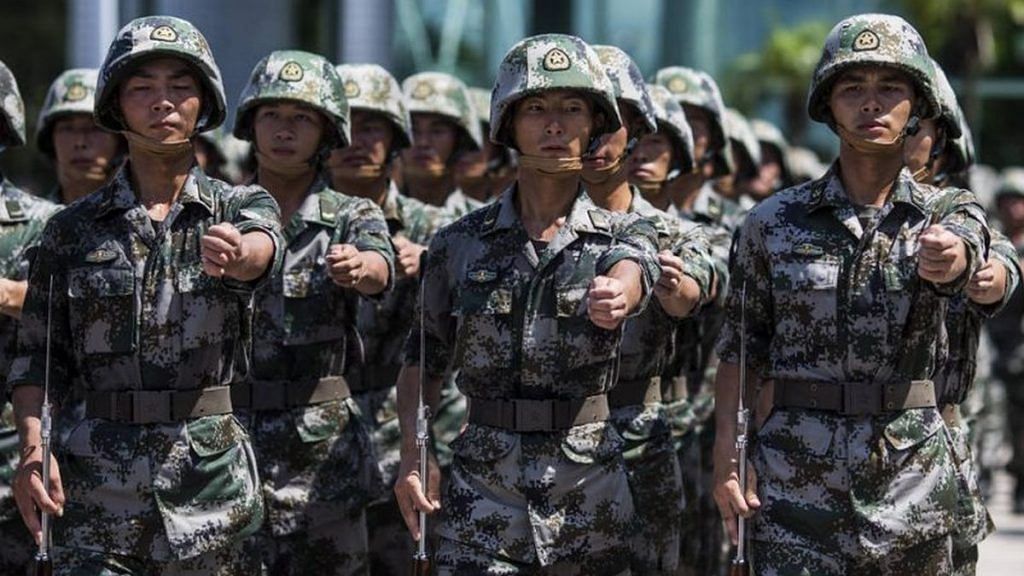New Delhi: India-China tensions at Depsang Plains in Ladakh precede the current stand-off by several months at least, ThePrint has learnt. The situation in the area, sources said, is similar to the one that existed in Pangong Tso before the current stand-off began in early May.
Both Pangong Tso and Depsang Plains have emerged as sticking points during the India-China disengagement efforts along multiple points in Ladakh, with the process entering a stalemate in the face of Beijing’s lack of cooperation.
Even though talks at the corps commander-level have hit a roadblock, a fresh dialogue is being held Saturday at the Major General-level, a notch below, in Daulat Beg Oldi. The talks will focus on Depsang Plains and the overall situation.
According to sources in the defence and security establishment, tensions at Depsang Plains can be traced to China’s 18-km incursion into the area, which is close to the strategic Daulat Beg Oldi base, in 2013, and the 2017 Doklam stand-off.
It was reported in 2013 that the three weeks of tensions triggered by the Chinese incursions had been resolved after talks, with India and China agreeing to go back. But sources said PLA soldiers never went back completely across the Indian perception of Line of Actual Control (LAC), and stayed behind the limit of patrolling points.
At Depsang, the patrolling points are a little away from the perceived LAC like in other areas, and this is called the limit of patrolling. Soldiers don’t go beyond the points, even though the LAC is still ahead.
However, Depsang is an area where the perception of the LAC is starkly different between China and India. According to locally established agreements, both sides were allowed patrolling until certain areas that fell into individual perceptions of the LAC, but sources said the practice “came under stress” after the Doklam stand-off of 2017.
“The Depsang issue is different from the current stand-off that is taking place between India and China. The Chinese have been blocking India’s patrol from bottleneck area to PP 11, PP12, PP12 A and PP 13. This has been happening from before the current tensions at LAC,” a source in the know said.
Another source said that Indians, too, have blocked Chinese patrols in the Depsang. However, this is because the Chinese perceived LAC is beyond the Bottleneck area (around 18-20 km from LAC) and just 1.5 km from Burtse, where the Chinese reached their claim line in 2015 during Chinese President Xi Jinping’s India visit.
Also Read: What PLA’s India specialist officer said in 1962 gives us a clue to how China thinks
Importance of Depsang
In 2013, the Chinese had managed to complete a road behind the Bottleneck area in what is known as the Raki Nala region. Indians used to go by foot beyond the Bottleneck area, through which, as the name suggests, it is impossible to take vehicles.
In April 2013, sources said, Chinese troops crossed into Indian territory and pitched tents for three weeks at Raki Nala, 30 km south of Daulat Beg Oldi, before they agreed to pull out. “However, they went back beyond the limit of Indian patrolling and not behind the LAC,” a source cited above said.
The Army has been tightlipped about the situation in Depsang but officers say enough men and material have been moved there to prevent any incursion by China.
Apart from its proximity to Daulat Beg Oldi, what makes the area more strategically important is that if the Chinese do decide to build up until what they perceive to be the LAC, they could then gain control of the Darbuk-Shyok-Daulat Beg Oldi (DS-DBO) road and also attempt to take over the Saser La pass, which could cut off Siachen Glacier for India.
This situation has been war-gamed multiple times by the northern command, the sources said.
“This all has been war-gamed. However, it is not the case that the Chinese can just come in and occupy these areas. The sub-sector north (which oversees Depsang and Daulat Beg Oldi) itself is very important for India and there is enough of defence already in place. More has been added in wake of the current tensions at LAC,” a source said.
Satellite images have shown increased Indian and Chinese deployments at Depsang Plains. The Chinese have deployed additional tanks and artillery guns and moved them slightly forward from their usual positions. But they are still away from India’s perception of LAC.
India has also moved additional men, tanks and other equipment into Depsang Plains to counter Chinese build-up.
Also Read: India is losing the battle — 5 things Modi must do to rescue his image and China policy
Depsang issue similar to Pangong Tso
Sources said the situation in Depsang is similar to the one that prevailed at the northern bank of the Pangong Tso before the intrusion this May.
In Pangong Tso, even though the Indian claim of LAC was until Finger 8, the Chinese used to move down from their Sirijap post and block Indian troops around Finger 5, way inside territory India perceives as its own.
Similarly, Indians used to block Chinese from patrolling until Finger 4.
Sources said several rounds of talks have taken place at Major General-, Brigadier- and Commanding Officer-levels over this issue in the past, but were overtaken by the parleys initiated since May to bring down tensions in new areas of confrontation.
Also Read: Document saying sensitive Ladakh standoff likely to be prolonged removed from MoD website
